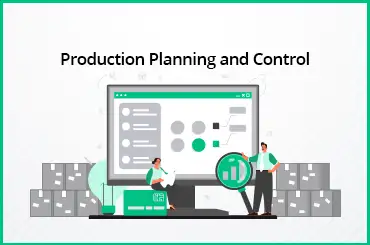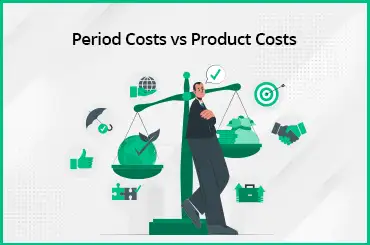Capacity Planning refers to understanding the resources that might be needed in the future for a project. Planning before the requirements regarding skills and time. Human resources are essential for advancement in all aspects. It increases corporate work and helps in growth.
What Is Capacity Planning?
This process allows time-efficient working and doing multiple tasks on many projects at one time. The capacity planning process reduces budget costs for the working of a company. It also improves the resource value.
Resources in this context include not only technology but also processes and humans.
For example, the operator plans the capacity of a machine in a warehouse.This is not a one-time process. It is a continuous process that requires constant checking of the available resources and planning for future use.
Different Types Of Capacity Planning
Three different types of capacity planning ensure the presence of resources. This can be for both long-term and short-term terms. This planning should be done at least weeks or months in advance to avoid any possible issues.
Product Capacity Planning
This refers to ensuring a sufficient supply of raw materials for product making. This leads to the peaceful working of a company and meeting deadlines. This provides the maintenance of the brand name and healthy customer relations.
Workforce Capacity planning
This type of planning makes sure there are enough workers for the whole task. Additionally, this type of planning also provides enough work time to finish. This planning shows when one must hire more people to complete the tasks within the deadline. It helps in communicating throughout the business and understanding the working needs.
Tool Capacity Planning
This ensures that there is enough equipment available to complete jobs. Along with human resources, workable machinery should also be maintained.
Read Also: AP Automation - Accounts Payable Automation Software
Capacity Planning Strategies
Strategic planning is required for the proper functioning of operating management. This leads to achieving long-term goals with time.
Even though there are many different approaches, here are the 3 most popular approaches for capacity planning in operations management.
1. Lag Strategy
This refers to being prepared with enough resources to meet the project's demands rather than the estimates. This type of capacity requirement planning ensures the lowest possible cost and is more conservative.
2. Lead Strategy
This is a more risky approach toward capacity planning than the lag strategy. It refers to increasing capacity in advance in the hopes of receiving more orders.
3. Match Strategy
The Match Strategy is a middle ground between the lag and lead strategy. Capacity planning is more achievable when this way is used.This requires observing the changing trends of the market and changing resources accordingly.
Read Also: Stay on Top of Your Inventory With Real-Time Inventory Management
How To Create A Capacity Plan?
This procedure might differ from business to business, but its importance remains constant. The few essential conditions that are the requirements should be followed in every process:
1. Calculate Current Capacity
By understanding the current needs and demands, you can calculate future demands. Essential questions like the present maximum output of the company must be asked to produce.
2. Track Staff Skills
Human resources aren't only about relying on people, but also about considering if those people are available and have the right skills. So, the management needs to know about staff skills and who's available.
3. Analysis of Project Requirement
The task performed by the team is the deciding factor about the amount of other resources that might be required. This may be time, budget, manpower, materials, and equipment.
4. Create Visibility
Make sure the current resources and staff are visible in the capacity planning process. Correct judgments about the capacity will ensure the reasonable use of monetary benefits. This will lead to hiring an extra workforce well in advance to avoid accidents.
5. Choose what to use
The correct tools should be used to create effective plans and strategies. You can use:
- spreadsheets
- Kanban Boards
- individual Gantt charts
6. Resource Allocation
Projects should follow the company's rules and priorities. This leads to peaceful working and the best usage of the plan.
7. Understanding Key Performance Indicators
After putting a capacity plan into action, it's important to check if it works. Key Performance Indicators (KPIs) are specific metrics or measurable values. Organizations use to track and check their progress toward achieving various business objectives and goals. This helps to understand data analysis. It also determines the development caused due to it.
Read Also: What Is Inventory Optimization? Techniques and Challenges
Benefits Of Capacity Planning
Even though there are many factors affecting capacity planning, one must recognize its benefits. It might be difficult to keep data updated and change the requirements with time. But it is essential because:
- It reduces in the chances of Stockouts
- It increases the capacity of delivery to customers within deadlines
- It helps in easy identification of the Inefficiencies in the Production Process
- It ensures preventive Risk Management measures
What's The Difference Between Capacity Planning And Resource Planning?
Even though these terms are used alternately, there is a slight difference in the actual meaning of the two.
The capacity requirement process focuses on the supply and demand of resources. It helps to know about the increase or decrease in orders for proper production.
Resource planning means using what you already have in the best way to get the most out of it. Proper distribution of the resource will lead to proper usage.
Capacity Planning Tools
There are many software and tools whose availability benefits the capacity planning process. Some of these tools are highly specific and focus only on one area, like resource management.
However software like TranZact, Hudl, ClickUp, and Resource Guru have proven helpful.
Read Also: Profit From Waste: How to Manage Your Scrap Inventory
Unlock Your Business's Potential with Capacity Planning: Embrace TranZact for Indefinite Growth
Discover how to make your business even better by using capacity planning. Capacity planning is a need of the hour for businesses around the world. It also leads to job opportunities for the youth. This is a way to figure out how much work your business can handle and how to use your resources wisely.
It helps you be more efficient and successful. This way, you can make sure you're producing the right amount of goods without wasting time or resources.
Unlock the limitless potential of TranZact to allow the unlimited growth of your business.
FAQs On Capacity Planning
1. Which is the riskiest capacity planning strategy of all?
Out of the three main ways to plan for having enough resources, the lead strategy is seen as the most risky.
This strategy depends on making guesses at the beginning and then getting ready for the future based on those guesses. But if these guesses don't match up with what really happens in the market, there can be problems.
2. Which software can help in capacity planning?
Websites and tools like TranZact offer valuable support for strategic capacity planning. These platforms provide
- data-driven insights
- analysiscollaborative features
3. What is more important for a company? Resource planning or capacity planning?
Both planning how to use resources and planning for having enough capacity are equally important for a company's work. It's really important to find a good balance between these two processes.
This helps the company work smoothly and make sure it has enough resources to meet the demand.
4. What are the different types of capacities that should be considered?
When thinking about how much a company can do, it's important to think about what it can do in the short term, the long term, and the middle term.
Making these capacities work well together helps a company handle changes in demand and keep growing steadily.
5. What is the complete form of KPI?
KPI stands for Key Performance Indicators. These are important numbers that show how well a business strategy is working.
They give specific measurements that help understand if things are going well and give ideas for making things better.
6. Which strategy should be used in an ideal way for capacity planning?
The match strategy is seen as the best one for planning how much capacity is needed. This strategy tries to find a good balance between possible problems and making money by matching how much can be done with how much is expected to be needed.















